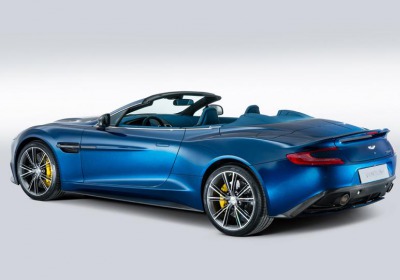Aston Martin, AMG ink technical partnership deal
Thu, 25 Jul 2013
It's hard to remember that the VH-platform Aston Martins were pretty mind-bending when they came out. Since the sports-luxury marque was cut loose from Ford's stewardship six years ago, the British manufacturer has seemed a bit adrift, largely playing with variations on a theme, save for the rather radical One-77. It is, of course, a very pretty theme, but the basic design language begun with the DB9 is now a decade old. The company's basic powertrain tech dates back to the Blue Oval era. And in the current horsepower and climate-science, er, climate, it wouldn't do for Aston to be seen as lacking.
Stuttgart's largest automaker has a division that deals in ungodly amounts of horsepower. It's been a specialty of theirs since they were an independent tuning shop in Burgstall an der Murr back in the late '60s and early '70s. Since staking their tent in Affalterbach, they've gone from the premier tuner of Mercedes-Benzes to Daimler's performance engineering skunkworks.
While side jobs for AMG are somewhat rare, they're not unheard of. They worked with Horacio Pagani to develop the 12-cylinder mills in his Zonda and Huyara supercars. Even collaboration between Daimler and Aston isn't completely new. Aston's unfortunate Lagonda concept from 2009 was built atop GL bones.
The great super-sports-car makers of the golden age who survive are few. Maserati and Ferrari benefit from Fiat's patronage. Lamborghini has the Volkswagen Group's resources at its disposal. Jaguar's a beneficiary of Tata's deep pockets. Aston, on the other hand, is owned by a consortium of investors, including Investment Dar (whose 34 percent stake in the company is currently being used as loan collateral), Adeem Investment and Investindustrial (who once owned Ducati outright and sold it to Audi as part of a consortium). Daimler will take a 5 percent chunk of the company as part of the deal. We can't help but wonder if Daimler isn't positioning itself for a larger stake if Investment Dar needs to shed further assets as part of their ongoing restructuring.
So what is the deal, exactly? Both parties are somewhat tight-lipped, saying only that it has to do with the development of a V8 for Aston, as well as the sharing of some electrical components. Aston claims the tech is for use in its next-generation cars. Given the gobs of more-efficient power that today's twin-turbo V8s are making, will we see a broad usage of the configuration in the next generation of Aston Martins? It's highly likely.
By Davey G. Johnson

